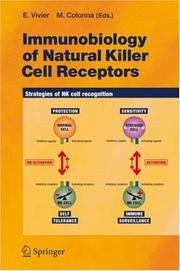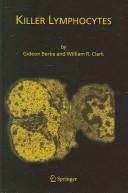| Listing 1 - 10 of 104 | << page >> |
Sort by
|
Book
ISBN: 3038974684 3038974676 Year: 2019 Publisher: MDPI - Multidisciplinary Digital Publishing Institute
Abstract | Keywords | Export | Availability | Bookmark
 Loading...
Loading...Choose an application
- Reference Manager
- EndNote
- RefWorks (Direct export to RefWorks)
3D printing has revolutionized the microfabrication prototyping workflow over the past few years. With the recent improvements in 3D printing technologies, highly complex microfluidic devices can be fabricated via single-step, rapid, and cost-effective protocols as a promising alternative to the time consuming, costly and sophisticated traditional cleanroom fabrication. Microfluidic devices have enabled a wide range of biochemical and clinical applications, such as cancer screening, micro-physiological system engineering, high-throughput drug testing, and point-of-care diagnostics. Using 3D printing fabrication technologies, alteration of the design features is significantly easier than traditional fabrication, enabling agile iterative design and facilitating rapid prototyping. This can make microfluidic technology more accessible to researchers in various fields and accelerates innovation in the field of microfluidics. Accordingly, this Special Issue seeks to showcase research papers, short communications, and review articles that focus on novel methodological developments in 3D printing and its use for various biochemical and biomedical applications.
Polymerization --- Cytotoxicity --- 3D printing --- Microfluidics --- Photochemistry
Book
ISBN: 128252612X 9786612526121 0080919294 0123704545 9780123704542 9780080919294 Year: 2010 Publisher: London : Academic,
Abstract | Keywords | Export | Availability | Bookmark
 Loading...
Loading...Choose an application
- Reference Manager
- EndNote
- RefWorks (Direct export to RefWorks)
Killer cells. --- Cell-mediated cytotoxicity. --- Cytotoxicity, Cell-mediated --- Cell death --- Killer cells --- K cells --- Natural killer cells --- NK cells --- Immunocompetent cells --- Cell-mediated cytotoxicity
Book
ISBN: 178923431X 1789234301 1838814434 Year: 2018 Publisher: IntechOpen
Abstract | Keywords | Export | Availability | Bookmark
 Loading...
Loading...Choose an application
- Reference Manager
- EndNote
- RefWorks (Direct export to RefWorks)
The book Cytotoxicity is aimed to be an essential reading to all medical students, biologists, biochemists and professionals involved in the field of toxicology. This book is a useful and ideal guide for novice researchers interested in learning research methods to study cytotoxic bioactive compounds. The parts of this book describe the replacement and different applications of the cytotoxic agents. All chapters are written by paramount experts in cytotoxicity research. This will hopefully stimulate more research initiatives, funding, and critical insight into the already increasing demand for cytotoxicity researches that have been evidenced worldwide.
Toxicology. --- Cytotoxicity. --- Chemicals --- Medicine --- Pharmacology --- Poisoning --- Poisons --- Toxicology --- Antibody-dependent cell cytotoxicity. --- ADCC (Immunology) --- Antibody-dependent cell-mediated cytotoxicity --- Antibody-dependent cellular cytotoxicity --- Cytotoxicity, Antibody-dependent cell --- Macrophage cell killing --- Null cell killing --- Cellular immunity --- Killer cells --- Toxicology and Pharmaceutical Science --- Medical Toxicology --- Health Sciences

ISBN: 0849363632 Year: 1992 Publisher: Boca Raton, Fla. : CRC Press,
Abstract | Keywords | Export | Availability | Bookmark
 Loading...
Loading...Choose an application
- Reference Manager
- EndNote
- RefWorks (Direct export to RefWorks)
Active oxygen in the body --- Cell-mediated cytotoxicity --- Leucocytes --- Congresses --- Congresses.

ISBN: 1280346965 9786610346967 3540277439 3540260838 3642065457 Year: 2006 Publisher: Berlin ; New York : Springer,
Abstract | Keywords | Export | Availability | Bookmark
 Loading...
Loading...Choose an application
- Reference Manager
- EndNote
- RefWorks (Direct export to RefWorks)
Natural Killer (NK) cells are large granular lymphocytes of the innate immune system. They are widespread throughout the body, being present in both lymphoid organs and non-lymphoid peripheral tissues. NK cells are involved in direct innate immune reactions against viruses, bacteria, parasites and other triggers of pathology, such as malignant transformation, all of which cause stress in affected cells. Importantly, NK cells also link the innate and adaptive immune responses, contributing to the initiation of adaptive immune responses and executing adaptive responses using the CD16 FcgRIIIA immunoglobulin Fc receptor. Such responses are mediated through two major effector functions, the direct cytolysis of target cells and the production of cytokines and chemokines. The authors focus here on the nature of recognition events by NK cells and address how these events are integrated to trigger these distinct and graded effector functions.
Medicine. --- Immunology. --- Biomedicine. --- Immunobiology --- Life sciences --- Serology --- Clinical sciences --- Medical profession --- Human biology --- Medical sciences --- Pathology --- Physicians --- Killer cells. --- Lymphocytes. --- Cell receptors. --- Cell-mediated cytotoxicity. --- Cytotoxicity, Cell-mediated --- Cell death --- Killer cells --- Cell membrane receptors --- Cell surface receptors --- Receptors, Cell --- Binding sites (Biochemistry) --- Cell membranes --- Proteins --- Nongranular leucocytes --- Leucocytes --- K cells --- Natural killer cells --- NK cells --- Immunocompetent cells --- Cell-mediated cytotoxicity
Book
ISBN: 3319239155 3319239163 Year: 2016 Publisher: Cham : Springer International Publishing : Imprint: Springer,
Abstract | Keywords | Export | Availability | Bookmark
 Loading...
Loading...Choose an application
- Reference Manager
- EndNote
- RefWorks (Direct export to RefWorks)
To celebrate the 40th anniversary of the discovery of Natural Killer (NK) cells, this volume focuses on the recent advances in our understanding of NK cell development and differentiation and their acquisition of functional properties, as well as the latest models for NK-cell analysis in mice and applications in clinical medicine. NK cells have travelled a circuitous path from their initial description as ‘spontaneous killers’ (for some simply an experimental artifact) to being a bona fide subset of innate lymphoid cells with a complementary mode of action in immune defense and an important mediator of immune reactivity in health and disease. Together, these reviews provide a timely and concise picture of the evolution of NK cells as essential agents in immunity and as potent weapons against disease. This book offers an appealing and insightful resource for scientists and clinicians.
Microbiology & Immunology --- Biology --- Health & Biological Sciences --- Killer cells. --- Cell-mediated cytotoxicity. --- Cytotoxicity, Cell-mediated --- K cells --- Natural killer cells --- NK cells --- Cell death --- Killer cells --- Immunocompetent cells --- Cell-mediated cytotoxicity --- Immunology. --- Medical virology. --- Oncology. --- Virology. --- Cancer Research. --- Tumors --- Medical microbiology --- Virology --- Virus diseases --- Immunobiology --- Life sciences --- Serology --- Cancer research. --- Cancer research --- Microbiology
Book
ISBN: 9535136720 9535136712 9535145738 Year: 2017 Publisher: IntechOpen
Abstract | Keywords | Export | Availability | Bookmark
 Loading...
Loading...Choose an application
- Reference Manager
- EndNote
- RefWorks (Direct export to RefWorks)
The book Natural Killer Cells is the result of a collective work that addresses in a clear and comprehensive way for readers and through as many sensuous details as possible, the most and various fundamental aspects of natural killer cells, as well as their clinical applications in cancer immunotherapy. This book will serve as an invaluable resource and pedagogical support for clinicians, researchers, basic scientists, immunology and immunopathology lecturers, as well as for students in biology and medicine, especially the ones with an advanced understanding of immunology.
Killer cells. --- K cells --- Natural killer cells --- NK cells --- Immunocompetent cells --- Cell-mediated cytotoxicity --- Life Sciences --- Immunology and Microbiology --- Cancer Immunology --- Pure Immunology
Book
ISBN: 9782889192793 Year: 2015 Publisher: Frontiers Media SA
Abstract | Keywords | Export | Availability | Bookmark
 Loading...
Loading...Choose an application
- Reference Manager
- EndNote
- RefWorks (Direct export to RefWorks)
Cytotoxic lymphocytes, comprised of NK cells and cytotoxic T cells, play a pivotal role in immune defense. By directed release of perforin-containing lytic granules, NK and cytotoxic T cells can eradicate pathogen-infected, tumorigenic, and otherwise stressed cells. By the virtue of cytokine and chemokine secretion, they can influence other cells of the immune system. Through these processes, cytotoxic lymphocytes also contribute to the maintenance of immune homeostasis. In recent years, much progress has been made with respect to the mechanisms by which cytotoxic lymphocytes develop, differentiate, and exert their effector functions. In a clinical perspective, a wide variety of mutations impairing cytotoxic lymphocyte development and/or function have been associated with immunodeficiency and severe diseases in humans. Aberrant activity of cytotoxic T cells and/or NK cells has been linked to an increased susceptibility to viral infections, persistent inflammation, cancer and autoimmunity. In addition, lymphocyte cytotoxic activity may be harnessed therapeutically to target tumor cells in different adoptive cellular therapy regimes, or through the use of recombinant antibodies. Still, a number of questions remain in regards to how cytotoxic lymphocytes develop, their relationships and plasticity, as well as the mechanisms dictating target cell discrimination, lytic granule release and induction of target cell death. In this Research Topic we encourage submission of research articles, reviews, perspectives, or methods on cytotoxic lymphocyte development and function, their relation to the pathogenesis or treatment of different diseases, as well as comparison between similarities and/or differences in their effector functions. Considering the clinical significance of NK cells and cytotoxic T cells, we aim to provide a range of articles summarizing the current knowledge on the identification and elucidation of the mechanisms governing cytotoxic lymphocyte activity.
Microbiology & Immunology --- Biology --- Health & Biological Sciences --- secretory lysosomes --- NK cells --- hemophagocytic histiocytosis --- immune therapy --- granzyme --- lytic granules --- Cytotoxicity --- anti-tumor response --- Immunological Synapse --- Perforin

ISBN: 1281066540 9786611066543 1402032706 1402032692 1402065639 Year: 2005 Publisher: Dordrecht ; New York : Springer,
Abstract | Keywords | Export | Availability | Bookmark
 Loading...
Loading...Choose an application
- Reference Manager
- EndNote
- RefWorks (Direct export to RefWorks)
The existence of a unique kind of immune cell – the killer lymphocyt- which destroys other cells in a highly specific manner, has fascinated immunologists for almost half a century. How do these cells, whose precursors have lived in communal harmony with their host, decide that some of their cohabitants must die? And how do they kill them? The definition of killer lymphocytes came from discovery of their roles in a wide range of in vivo phenomena such as transplant rejection, virus infection and its related immunopathologies, and anti-tumor responses. Yet for the most part almost everything we know about these cells has come from studying them in vitro. They have yielded their secrets slowly and reluctantly. To understand fully how they work, geneticists and immunologists had to unravel the major histocompatibility systems of vertebrates, a long and torturous road that provided some of the darkest hours of immunology. The search for antigen-sensing receptors on both T cells and NK cells was scarcely less frustrating. And the holy grail of ce- mediated cytotoxicity – defining the mechanism by which killer cells take down their adversaries – sorely tested the ingenuity, patience and mutual good will of laboratories around the world. These questions have now largely been answered. But do we really understand these cells? We can tame them to a large degree in transplant rejection. It may yet turn out that we can harness their immunotherapeutic potential in treating viral and malignant disease.
Killer cells. --- Lymphocytes. --- Nongranular leucocytes --- Leucocytes --- K cells --- Natural killer cells --- NK cells --- Immunocompetent cells --- Cell-mediated cytotoxicity --- Immunologie --- Lymfocyten --- Immunology. --- Oncology. --- Medical virology. --- Microbiology. --- Bacteriology. --- Hematology. --- Cancer Research. --- Virology. --- Haematology --- Internal medicine --- Blood --- Microbiology --- Microbial biology --- Biology --- Microorganisms --- Medical microbiology --- Virology --- Virus diseases --- Tumors --- Immunobiology --- Life sciences --- Serology --- Diseases --- Cancer research. --- Cancer research
Periodical
ISSN: 20928467 1738642X
Abstract | Keywords | Export | Availability | Bookmark
 Loading...
Loading...Choose an application
- Reference Manager
- EndNote
- RefWorks (Direct export to RefWorks)
Toxicology --- Toxicology. --- Chemicals --- Evidence Based Toxicology --- Evidence-Based Toxicology --- Toxinology --- Based Toxicologies, Evidence --- Based Toxicology, Evidence --- Evidence Based Toxicologies --- Evidence-Based Toxicologies --- Toxicologies, Evidence Based --- Toxicologies, Evidence-Based --- Toxicology, Evidence Based --- Toxicology, Evidence-Based --- Medicine --- Pharmacology --- Poisoning --- Poisons --- Pharmacogenetics --- Life Sciences --- Cytology, Cell Biology --- toxicologie --- Molecular toxicology --- Molecular toxicology. --- toxicology --- cytotoxiciteit --- cytotoxicity --- toxicogenomics --- Toxicology (General) --- Toxicologie (algemeen) --- Toxicology, Molecular --- Molecular biology
| Listing 1 - 10 of 104 | << page >> |
Sort by
|

 Search
Search Feedback
Feedback About UniCat
About UniCat  Help
Help News
News